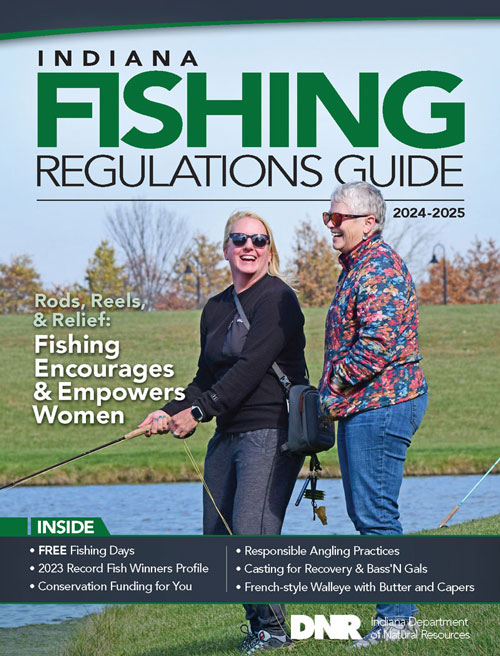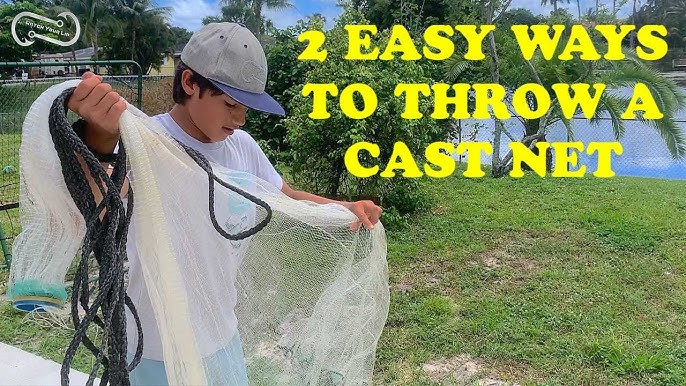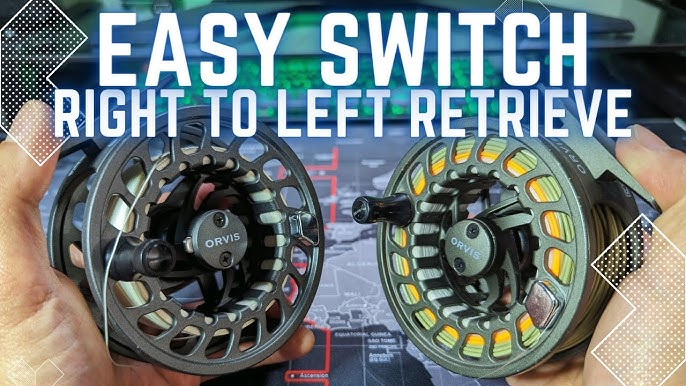How to Banish Fishing Line Memory for Good: Expert Tips
To avoid or remove memory from fishing line, you can soak the line in warm water and stretch it gently. This helps to straighten out any kinks and twists.
Additionally, you can ensure proper storage of the fishing line by spooling it neatly on a reel or using line spoolers to prevent memory formation. Regularly inspecting the line for any signs of wear or damage and replacing it as needed can also help maintain its performance.
Understanding the causes of memory formation in fishing line, such as improper storage or excessive use, can further assist in preventing this issue. By following these steps, you can enjoy a hassle-free fishing experience with a line that remains smooth and tangle-free.
Understanding Fishing Line Memory
Fishing line memory is a phenomenon that every angler encounters while out on the water. It refers to the tendency of fishing line to retain the shape of the spool that it was wound around. This can cause a host of problems, including decreased casting distance, line tangles, and reduced sensitivity. Understanding fishing line memory is crucial for any angler who wants to optimize their fishing experience. In this article, we will delve into what fishing line memory is, how it affects your fishing, and the common problems it can cause.
What Is Fishing Line Memory?
Fishing line memory is the result of the line being wound tightly around the spool for an extended period of time. When the line is unspooled, it retains the coiled shape. This is especially true for monofilament and fluorocarbon lines, as they are more prone to memory compared to braided lines.
So, why does fishing line memory occur? The plastic polymers used to make fishing lines have a natural tendency to hold a shape. This becomes more pronounced as the line ages, making it increasingly difficult to straighten out the coils once they form.
How Does Fishing Line Memory Affect Your Fishing Experience?
Fishing line memory can have a significant impact on your fishing experience. Here are a few ways it can affect your time on the water:
- Decreased Casting Distance: The coiled shape of a line with memory creates extra resistance as it passes through the guides of your fishing rod. This resistance can limit your casting distance, making it harder to reach those elusive fish.
- Line Tangles: When a line with memory is cast, the coils can overlap and tangle, resulting in frustration and wasted time. Untangling these knots is not only time-consuming but also increases the risk of weakening the line.
- Reduced Sensitivity: Fishing line with memory may not transmit vibrations and movements as efficiently as a straight, memory-free line. This can make it more challenging to detect subtle bites and decreases your chances of successfully hooking fish.
Common Problems Caused By Fishing Line Memory
Now that we understand what fishing line memory is and how it affects your fishing experience, let’s explore some of the common problems it can cause:
| Problem | Cause |
|---|---|
| Line Coiling | Memory in fishing line causes it to coil on the reel and while casting, resulting in reduced performance. |
| Backlashes | A line with memory is more prone to backlashing, leading to time-consuming tangles that require intricate detangling. |
| Reduced Durability | Coiled fishing line subjects itself to increased stress, resulting in quicker wear and tear, decreased strength, and higher chances of line breakage. |
Combating fishing line memory is essential to ensure a successful and enjoyable fishing experience. In the next sections, we will discuss preventive measures and effective ways to remove memory from fishing lines, helping you optimize your time on the water.
Choosing The Right Fishing Line
Choosing the right fishing line is crucial for ensuring a successful fishing trip. Not only does it affect your casting distance and accuracy, but it also plays a significant role in preventing or removing memory from the fishing line. Memory refers to the line’s tendency to retain its coiled or twisted shape after being spooled on a reel, making it difficult to handle and affecting its performance.
Factors To Consider When Selecting A Fishing Line
When choosing a fishing line, there are several factors to consider that can help you reduce memory and enhance your overall fishing experience.
- Line Material: The type of material used in the fishing line affects its memory. Monofilament lines, for example, tend to have more memory compared to fluorocarbon or braided lines.
- Diameter: Thicker lines tend to have less memory than thinner lines. So, consider using a slightly thicker line if reducing memory is a priority.
- Stretch: The amount of stretch in a fishing line can also impact memory. Lines with more stretch are more prone to excessive coiling and memory formation.
- Quality: Investing in a high-quality fishing line can make a significant difference in terms of memory and overall performance. Lower-quality lines tend to have more memory.
Different Types Of Fishing Lines And Their Properties
There are various types of fishing lines available, each with its own properties and memory characteristics.
| Type of Fishing Line | Properties |
|---|---|
| Monofilament Line | Relatively inexpensive, easy to handle, high visibility, moderate abrasion resistance, and tends to have more memory than other types of lines. |
| Fluorocarbon Line | Virtually invisible underwater, high abrasion resistance, less stretch, sinks faster, low visibility, and has less memory compared to monofilament lines. |
| Braided Line | High strength, minimal stretch, excellent sensitivity, good casting distance, lower visibility, and relatively low memory. |
Best Fishing Line Options For Reducing Memory
When it comes to reducing memory, some fishing line options are better than others. Here are the top choices to consider.
- Fluorocarbon Line: Fluorocarbon lines have relatively low memory and are popular for their abrasion resistance. They also sink faster, making them suitable for fishing in deeper waters.
- Braided Line: Braided lines have minimal memory due to their construction. With high strength and sensitivity, they are great for casting long distances and fishing in areas with heavy cover.
- Hybrid Line: Hybrid lines combine the properties of different materials to reduce memory and increase overall performance. They often combine the low memory of fluorocarbon lines with the manageability of monofilament lines.
Remember, choosing the right fishing line is crucial in preventing or removing memory from the line. Consider the factors mentioned above and select a suitable type of line that best meets your fishing needs. By doing so, you can enhance your fishing experience and increase your chances of a successful catch.
Preparing Your Fishing Line
Preparing Your Fishing Line Properly spooling your reel One of the best ways to avoid or remove memory from your fishing line is by properly spooling your reel. This is a crucial step that ensures the line is correctly loaded onto your reel, reducing the potential for twists and memory. Here’s how you can do it right: 1. Use a line counter: When spooling your reel, consider using a line counter to accurately measure the amount of line you’re putting on. This helps prevent overfilling or underfilling your spool, both of which can contribute to line memory. 2. Apply tension: As you spool the line, it’s important to apply tension to keep the line tightly wound onto the spool. You can do this by lightly holding the line between your thumb and index finger as you turn the handle. This helps eliminate any loose coils that might cause memory issues. 3. Slow and steady: Take your time when spooling the line onto your reel. Avoid cranking the handle too quickly, as this can lead to line twist and memory. Instead, maintain a slow and steady pace, allowing the line to evenly distribute onto the spool. Techniques for removing existing memory from the line If you’re dealing with an already memory-laden fishing line, don’t worry, there are techniques you can use to remove or reduce the memory effect. By following these techniques, you can restore your line to its optimal performance: 1. Stretching the line: One effective way to remove memory from the fishing line is by stretching it. To do this, grab the line firmly between your hands and apply gentle tension. Slowly pull the line away from your body, allowing it to stretch. Repeat this process several times along the length of the line. Stretching helps eliminate any coiled memory and straightens the line. 2. Straightening with heat: Another method to remove memory from your line is using heat to straighten it. This technique is particularly effective for fluorocarbon lines. Using a hairdryer or submerging the line in warm water, heat it gently. While applying heat, run the line between your fingers to help straighten out any curls or kinks caused by memory. By following these preparation techniques, you can maintain a well-spooled reel and eliminate or lessen the memory effect on your fishing line. Whether you’re spooling new line or dealing with existing memory, these steps will help optimize your fishing experience by ensuring a smooth and tangle-free cast. Remember, proper preparation is key to a successful day on the water.Maintenance And Storage Tips
Bonus Tips And Tricks For Preventing Memory
In addition to the mentioned methods for removing or avoiding memory from fishing line, there are a few bonus tips and tricks you can try. These methods can help improve the lifespan of your fishing line and enhance your overall fishing experience.
Using Line Conditioner And Lubricants
Line conditioners and lubricants are specially formulated products that can help prevent memory in fishing lines. These products work by reducing friction and increasing the line’s flexibility, making it less prone to coiling and tangling. To use line conditioner, simply apply a small amount to your fishing line and distribute it evenly across the line’s surface. This will create a protective layer that can help reduce memory and improve casting performance.
Alternate Methods For Reducing Memory
In addition to using specialized products, there are a few alternative methods you can try to reduce memory in your fishing line:
- Stretching the line: Gently stretching the line can help remove any excess memory and restore its original shape. To do this, hold both ends of the line and apply light tension while running your hands along the length of the line.
- Soaking the line: Submerging your fishing line in warm water for a short period of time can help relax the memory and make it more manageable. Be sure to thoroughly dry the line before using it to prevent corrosion.
- Changing the spooling method: Sometimes, the way the line is spooled onto the reel can contribute to memory. Try respooling your fishing line using a different method, such as a cross-wrap or parallel spooling, to minimize memory formation.
Common Mistakes To Avoid When Dealing With Fishing Line Memory
When trying to prevent or remove memory from fishing line, it’s important to avoid certain common mistakes that can worsen the problem:
- Overfilling the reel: Overfilling the reel can put unnecessary stress on the fishing line and contribute to memory formation. Make sure to leave a bit of room on the spool to allow for proper line management.
- Using old or worn-out line: Fishing lines have a limited lifespan and can develop memory over time. It’s advisable to replace your fishing line regularly to maintain optimal performance.
- Storing the line improperly: Leaving your fishing line exposed to extreme temperatures or sunlight can degrade the line’s quality and lead to memory formation. Store your fishing line in a cool, dark place to prolong its lifespan.
- Using excessive force during casting: Casting with excessive force can cause the line to slap against the rod guides, creating memory. Practice using a smooth and controlled casting motion to minimize impact on the line.
By following these bonus tips and tricks, you can significantly reduce the memory formation in your fishing line, ensuring a smoother and more enjoyable fishing experience.
Conclusion
Preventing or removing memory from fishing line is essential for achieving optimal performance and preventing frustrating tangles. By following these expert tips and techniques, such as regularly respooling your line, using appropriate knots, and avoiding excessive casting distances, you can ensure that your fishing line remains memory-free.
Remember, proper maintenance and care of your line greatly contributes to your angling success. So, are you ready to enjoy hassle-free fishing and land your prized catch without any snags or mishaps?




